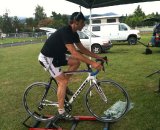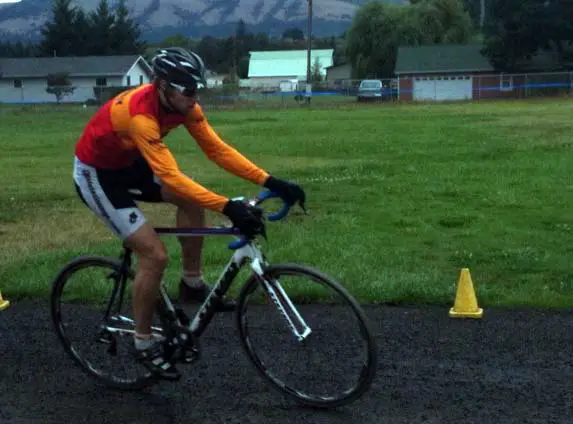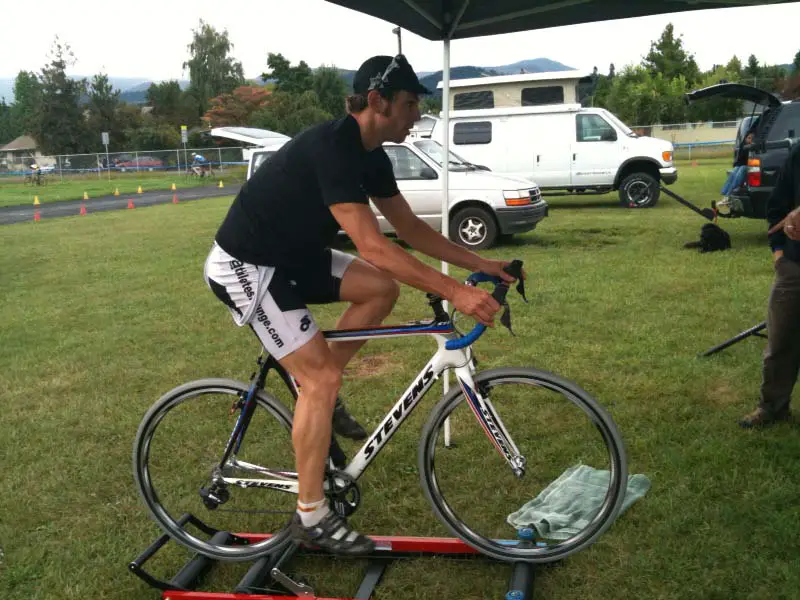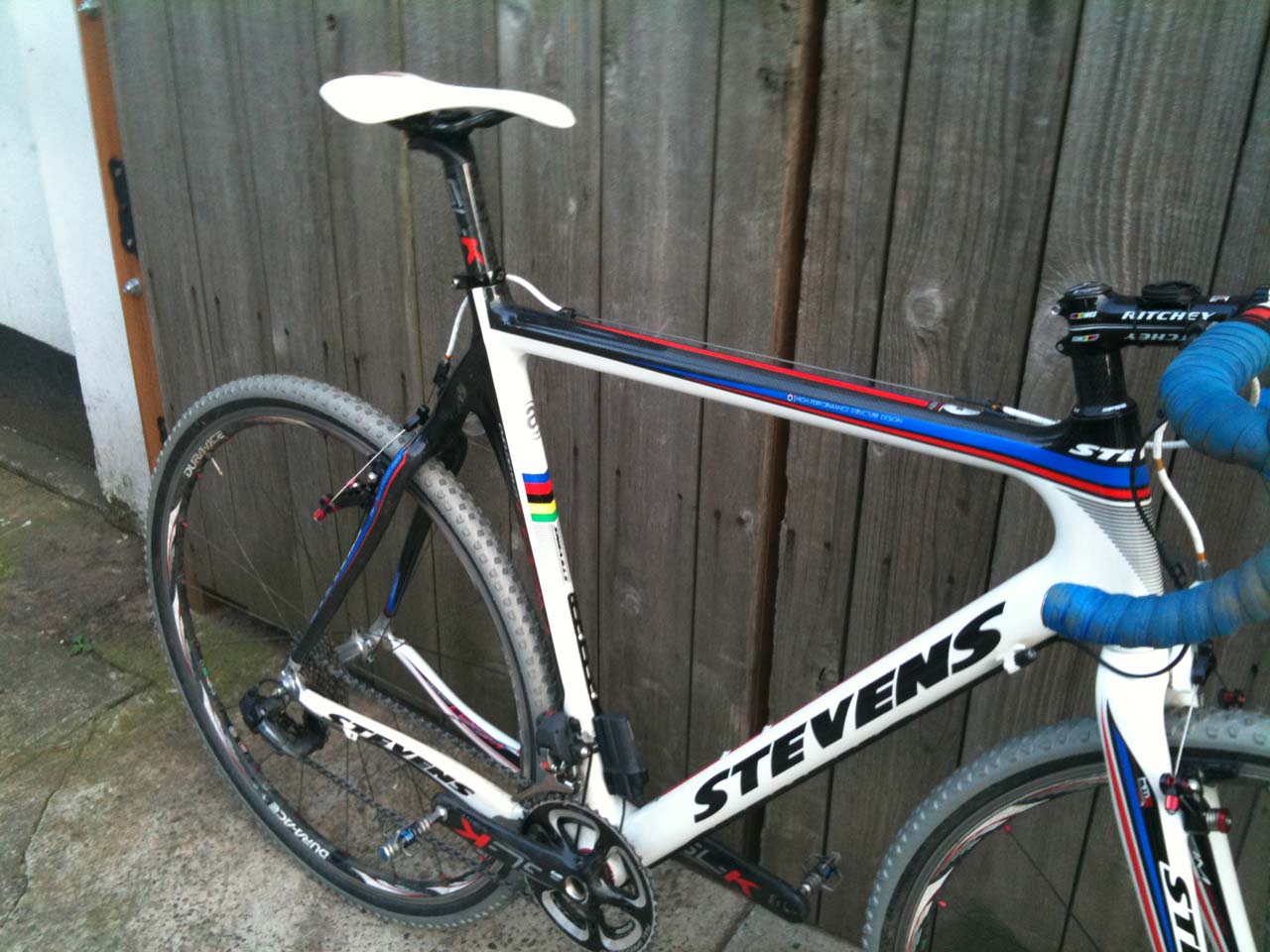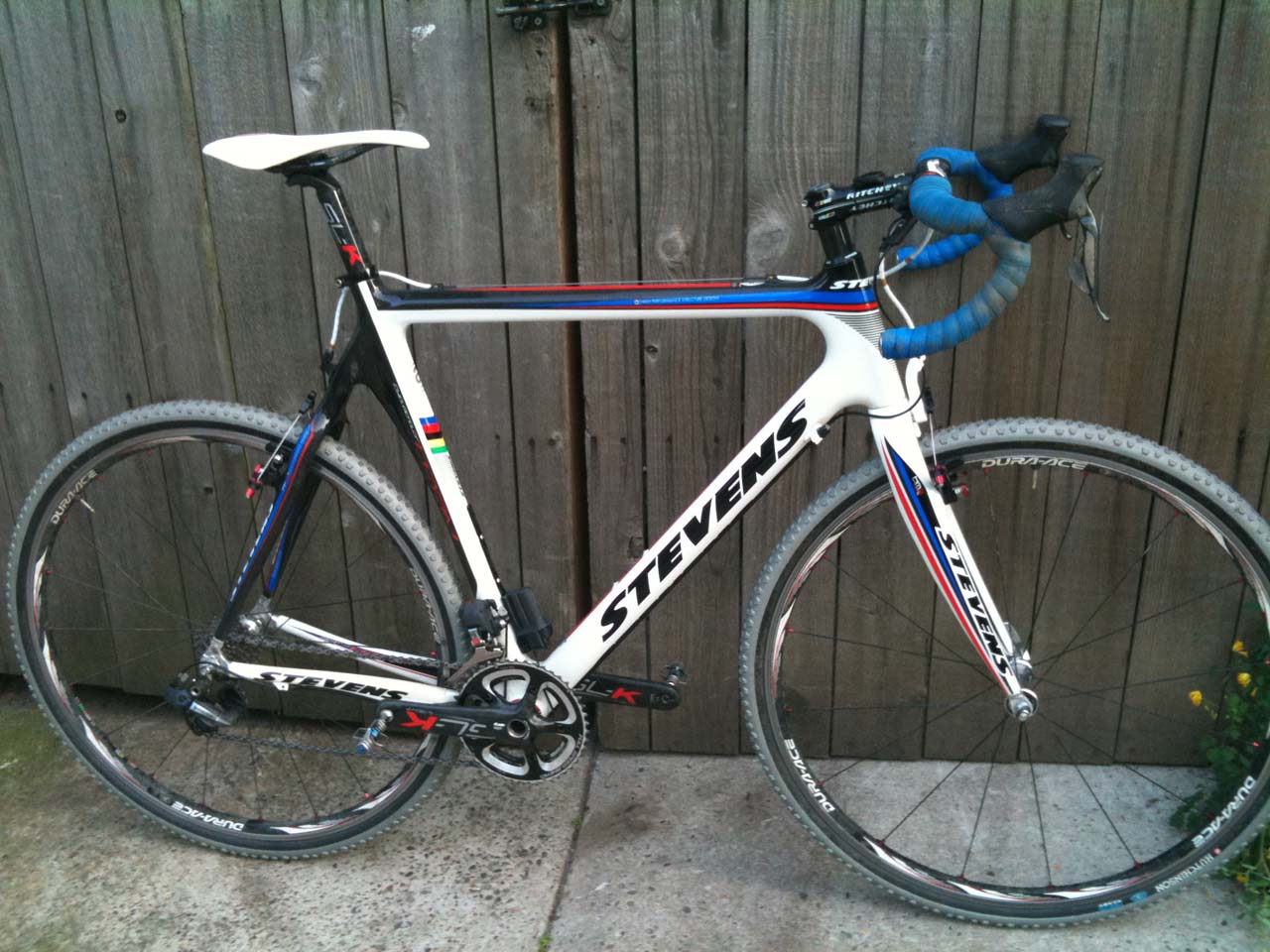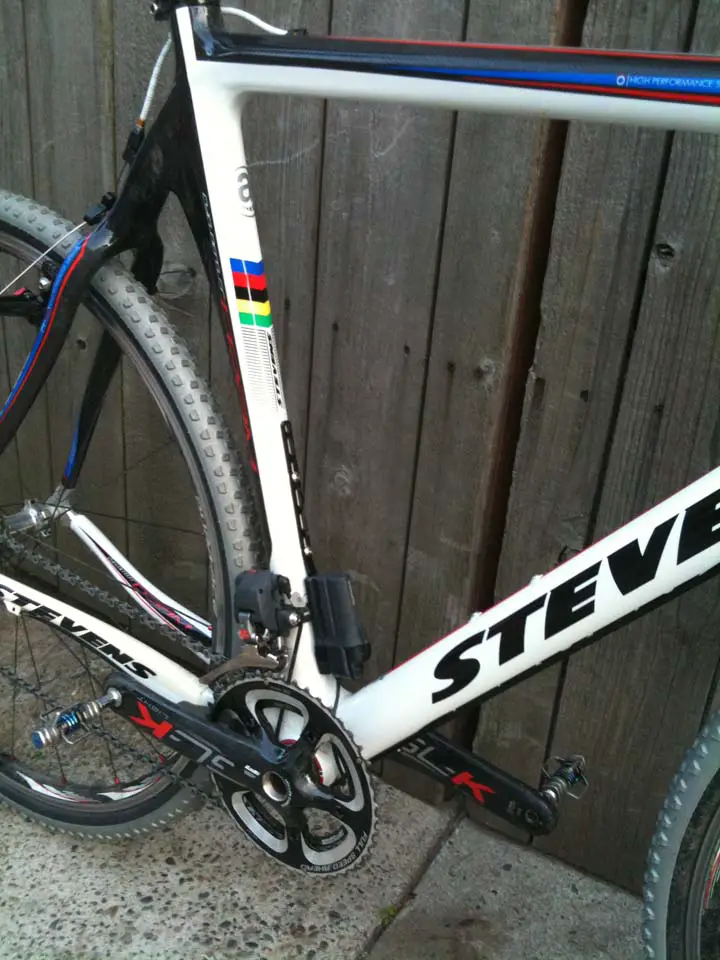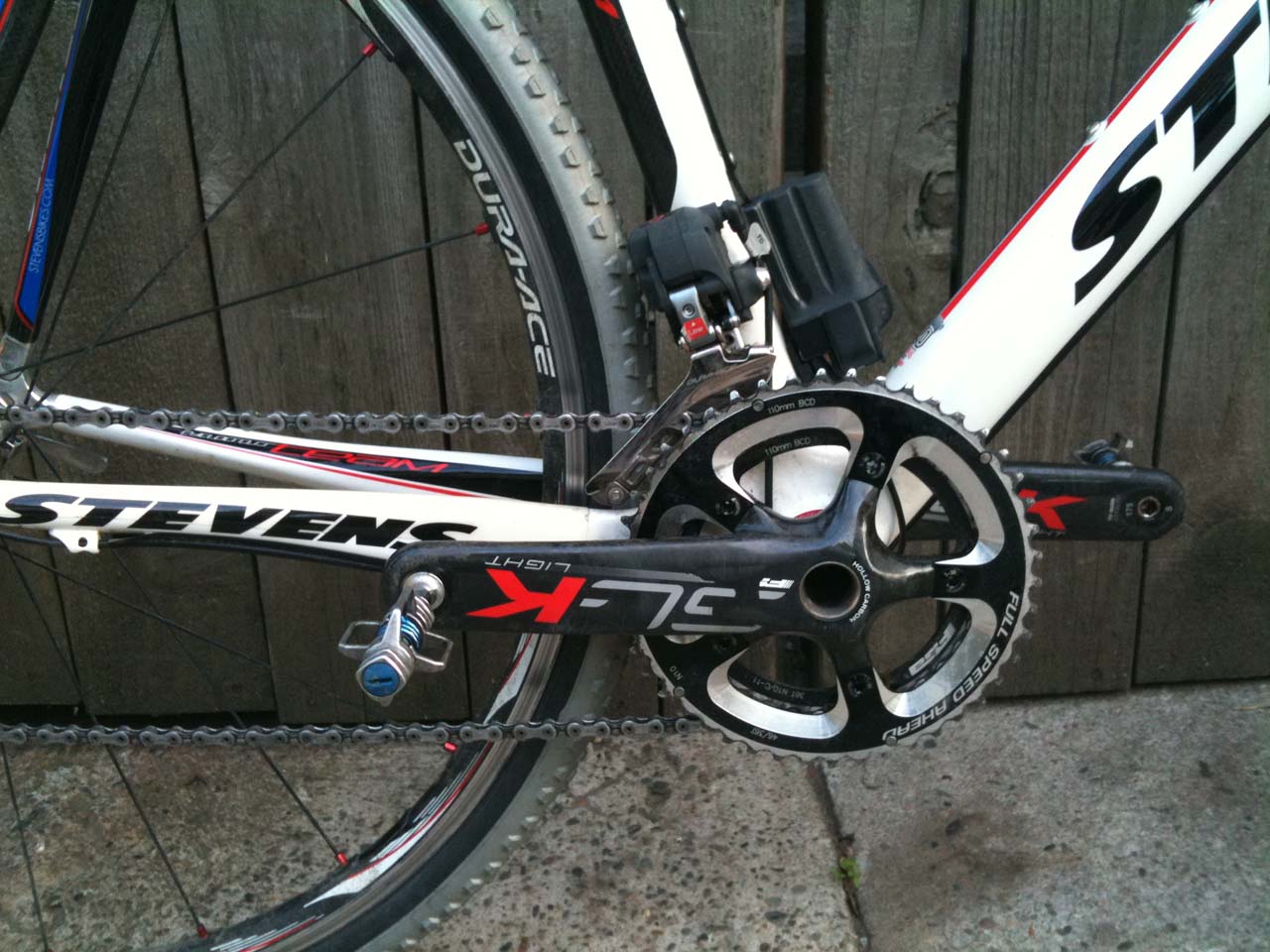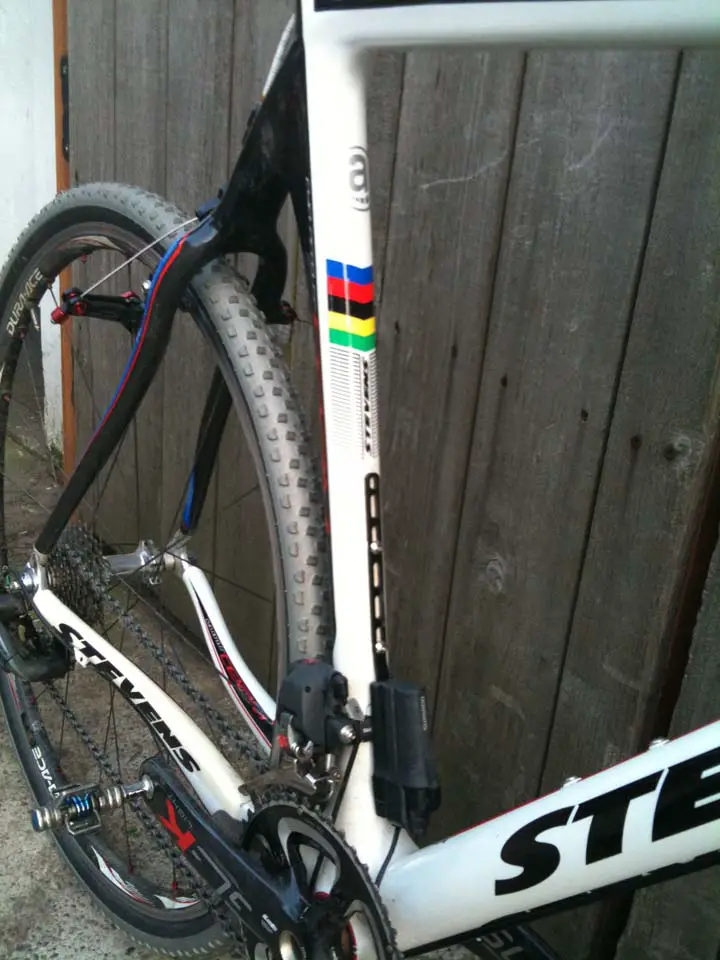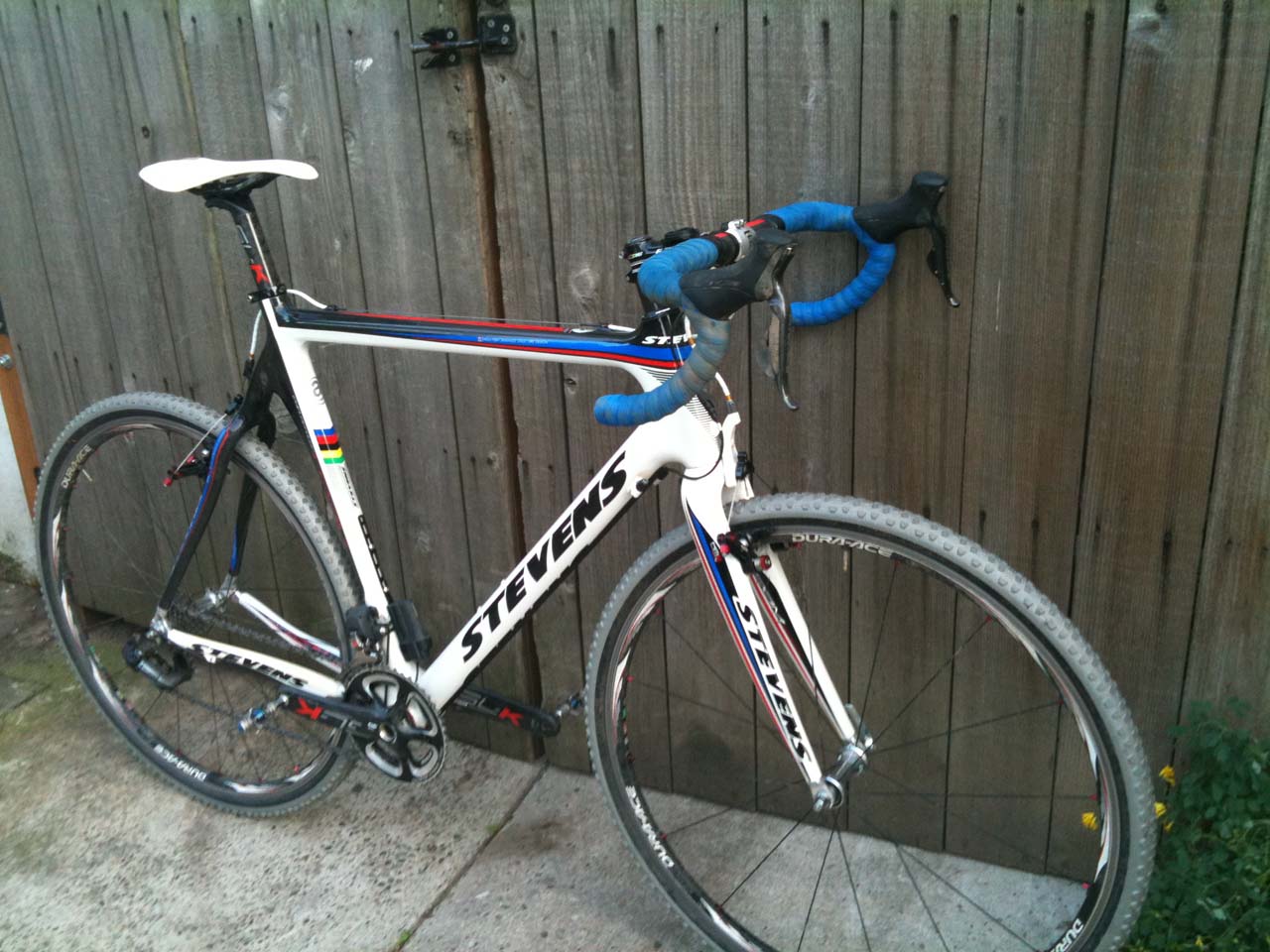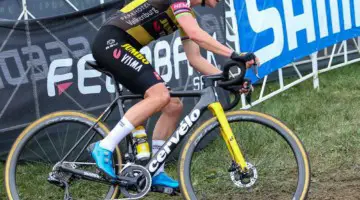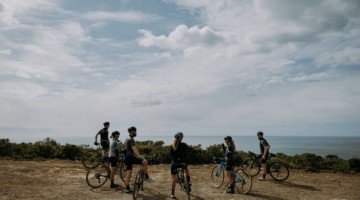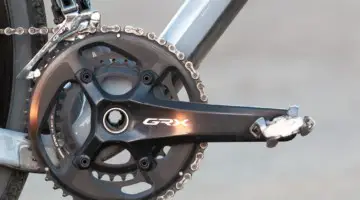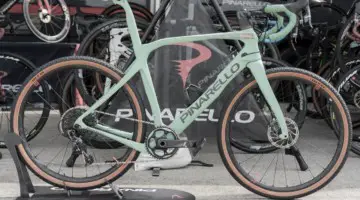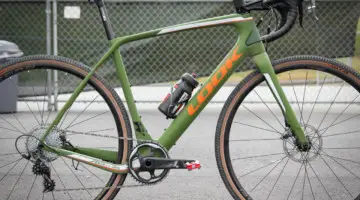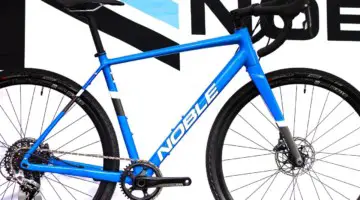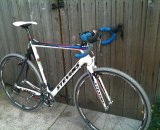
The battle-tested Stevens: note the tell-tale crash dirt on the handlebar and right shifter © Chris Bagg
Cyclocross Magazine contributor Chris Bagg somehow finagled his way aboard a borrowed Shimano Di2 electric-shifting carbon dream bike at a recent Northwest race. So what happens when the pro triathlete trades his aero bars and bar-end shifters for paddles? Read on.
There’s a moment in Ferris Bueller’s Day Off during which Cameron, Ferris’s depressed friend, hands over the keys to his father’s cherished Ferrari 250 GT California, a car that Ferris describes as “So choice.” As anyone who grew up in the 1980s knows, the car ends up a smoking ruin by the film’s close. So it was not without apprehension that I borrowed a friend’s Stevens Team Cyclocross equipped with Shimano Di2, Avid Shorty Ultimate Brakes and Dura-Ace Tubeless rims. I hadn’t ridden a ’cross bike in 2010, much less raced one, when I headed out to the Hood River Double Cross Day 2 on September 19th.
Luckily, the course was straightforward, as ’cross courses go: plenty of grass, largely flat, three sets of barriers and one long section of mud. It would take a mix-up with a lapped rider for me to crash the bike, but more on that to come. My job here is to review an astonishing piece of equipment.
I’ll tackle the frame first. Remember, I hadn’t been on a ’cross bike the entire year, and I leapt into the Men’s A race, so I was in for an hour of getting to know the bike. The Stevens frame (reviewed by editor Andrew Yee favorably in Cyclocross Magazine’s Issue 6) is the best ’cross frame I’ve ever ridden. It’s incredibly forgiving, but is also amazingly stiff: give the bike power and it goes forward remarkably well. The bottom bracket is lower than a conventional bottom bracket, but it’s not excessively low (70 mm for a 61 cm frame), and the bike handled beautifully. The Dura-Ace Tubeless rims, paired with Hutchinson Bulldog Tubeless tires, contributed to the handling. Running around 35-38 psi I never felt the bike slipping underneath me, despite the slick surface of the course (a good soaking during the B/Singlespeed race greased every corner nicely). I bottomed the rims out once on a remount and never burped any air. The Avid Shorty Ultimates also deserve praise. Although setting them up can be a hassle (each brake has five separate adjustment points: two barrel adjusters, one spring tension adjustment, the straddle hanger bolt and the cable end bolt), those two barrel adjusters make fine tuning the brakes easy, a nice feature on cantilever brakes. Modulation is excellent and I never noticed my brakes (or lack thereof).
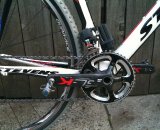
The battery pack provides power for the precise electronic shifts. Note the FSA, not Dura-Ace crank. © Chris Bagg
My biggest quibble is reserved for (believe it or not) the electronic shifting system. Although I never had trouble shifting (and the bike got quite muddy over the course of the race), I had trouble telling I was shifting. The shift paddles are quite small for downshifting, and they require a good amount of pressure. I had to focus my attention on shifting down and make sure I had hit the paddle. Then I had to listen closely for the little electronic whirr that let me know I had made the downshift. Also problematic is the inability to make many downshifts at once. As we’ve pointed out before at CXM (see our highly-talked about article on the “DIY Perfect Cyclocross Drivetrain” in Issue 9), the ability to downshift quickly is more important than the ability to shift up quickly, and Di2 will need some modification before multiple downshifts becomes possible. I also had looked forward to the cyclocross-specific shifters that come with Di2 and mount on the handlebar tops. They only run the rear derailleur, but I imagined I would use them often. I discovered that I almost never ride with my hands on the tops and that this feature was a moot point for me, but useful for some I’m sure.
Keep my own observations in perspective though. Sven Nys rides his Shimano Di2-equipped Colnago to countless victories, including last week’s race in Erpe-Mere, and Francis Mourey, Adam Craig and Molly Cameron love their Di2-equipped cyclocross rigs from Lapierre, Giant and Independent Fabrication, respectively (see Molly Cameron’s ride here). Like any drivetrain, I’m sure it takes some getting used to, and this triathlete found the learning curve a little steeper than expected.
I did tangle with a lapped rider about halfway through the race and put the bike into a barn wall and then the ground. Initial damage reports, however, have only uncovered the standard tweaked brake-hood and a slightly out of true front wheel, so I can return the bike in better condition than that unfortunate Ferrari 250 GT from Ferris Bueller’s Day Off.
Photo Gallery:
Claimed frameset weight: 1235g
More info: Stevens Bikes website













